Visit to Kitchen Budapest
Posted in: UncategorizedIn January, i was in Hungary to visit Kitchen Budapest. Before i head to a review of what i’ve seen in the geek alcove, i’m going to list a few surprises i encountered while i was walking through the capital:
I don’t know what is the matter with their public statues but some get tortured with fierce cruelty (must have something to do with the moustache):
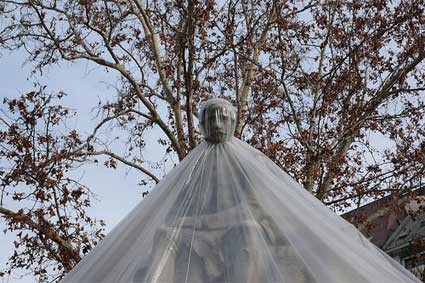
Workers have some really classy hats:
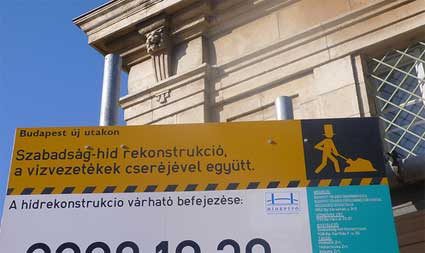
Santa has more fun there than anywhere else in the world
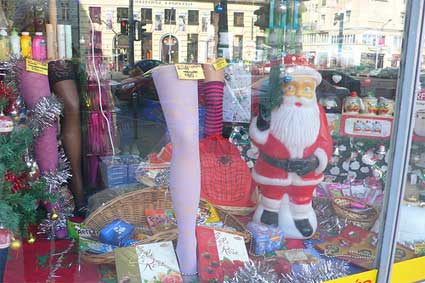
On January 26, the KiBu lab was opening its doors for a Kibu.Projects.Social event to present all Kitchen Budapest projects, get feedback on their work from visitors, drink hot chocolate and end the evening with performances.
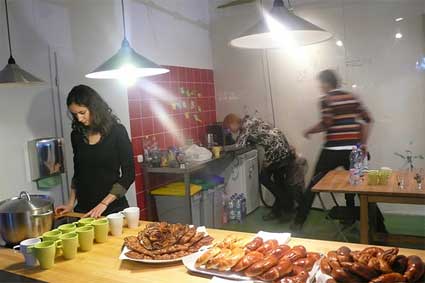
Kitchen Budapest, a new media lab which opened its doors in June 2007, invites researchers, designers and artists to explore the convergence of mobile communication, online communities and urban space but also their impact on our society. Its director is Adam Somlai-Fischer whose work with Aether Architecture you probably know.
Some of the prototypes presented in January were developed over several months, others took only a couple of weeks to form. KiBu is sponsored by a telecom company but that doesn’t mean that its projects stop at the end of the phone antenna: the KiBuists are having fun with blenders, lamps, games, plants, gym, etc.
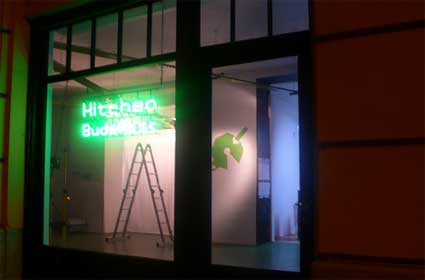
They work in team of people coming from very different backgrounds who mix and teach each other their passion and knowledge.
Now about (some of) the projects:
Eco Gym made me laugh out loud.
First you have this home bicycle which belonged to the mother of one of the KiBu designers. Well, i think that this bicycle is gorgeous, it belongs to a museum. Not that the KiBu people care that much, they simply dragged it to the lab and turned it into an eco-conscious experiment (a bit like Myriel Milicevic‘s Human Powered workshop in Antwerp last year).
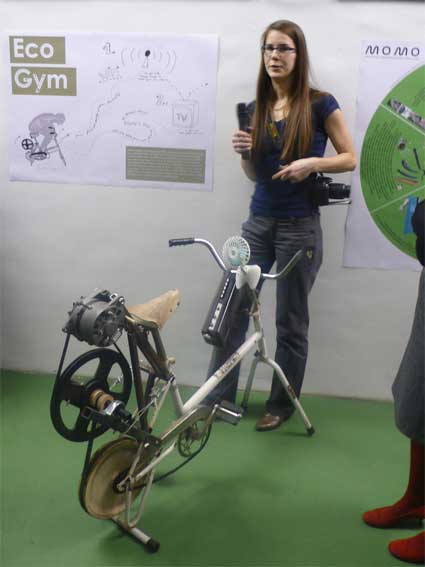
The bicycle is the first prototype of a group of projects which will harvest the energy of its user’s own activity and use it to power the light for example. The idea is to have a whole gym where energy wasting does not exist. The energy of users sweating on a training machine would power the whole gym: light, sound system, air-con, etc.
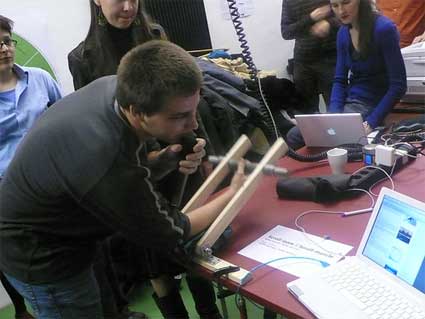
The same team of designers is also working on MOMO, a series of smaller applications which would motivate you to engage in physical activities during your daily routine. They were showing the Scroll-Muscle machine (image above), a system which forces you to flex your arm and exercise your biceps/triceps each time you scroll down a webpage.
Landprint is a really really really nice project I mentioned earlier but i was glad to finally be able to discuss with its designers.
The work is still very much in progress.
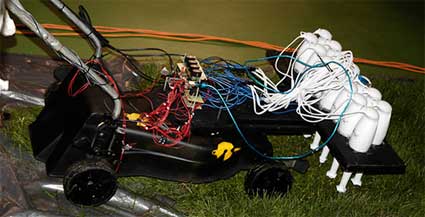
The main idea of Landprint is to develop a program-manipulated plant cultivation system, it would reproduce subtle patterns and photos by combining various species of plants with programmed robotics.
They prototyped an impressive Textmower, a modified lawnmower able to cut a pattern into the grass. While pushing the lawnmower, the robotic device switches on and off small blades as necessary. The final image is made up from the cut and uncut grass surfaces.
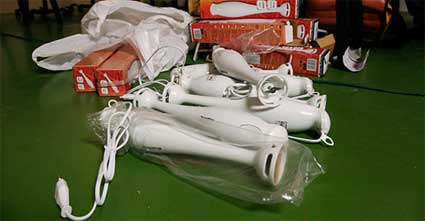
One of their plan is the “Sheep decide”. In this version, instead of a robotic device, it’s a sheep which would make a pattern.
The designers discovered that there are some kind of grass which sheep like and other they do not like. Their plan would be to seed a field with two different hayseeds, the latent picture would emerge and become visible as the sheep eats its way through the field.
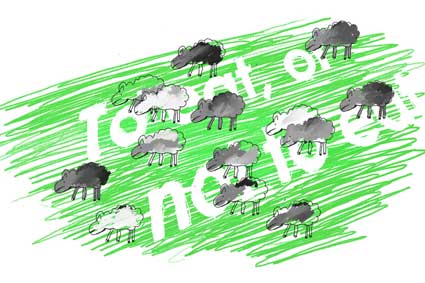
The idea made me think of this video of sheep being “re-programmed” in order to turn grazing animals into self-powered weeding machines.
autoCut is a sound-based “self-editing” video application still in development but already quite impressive. The system would make use of the many short videos shot by mobile devices which usually remain on the hard disk, or are uploaded to a video-sharing portal without any editing.
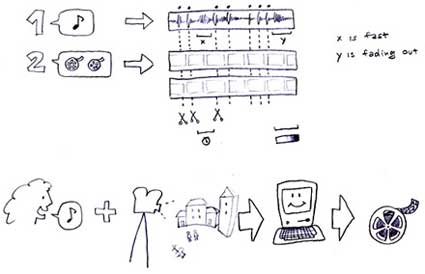
The autoCut program selects and edits the videos according to a certain music. Moreover, autoCut can handle the videos in real time, based on the rythm of live audio input.
this cut-up is made with a pd/pdp prototype, there is no after-editing, it cuts itself based on the beat of the music (crunch). there are 9 small clips, and the program chooses between them, while modifying the clips speed, position, and image composition (rotation).
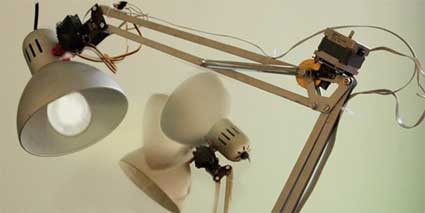
Mllamp was sick while i was in Budapest. The project experiments with emotions simulation and putting minimal intelligence into everyday things. The robotically-enhanced desk lamp has been suited up with anthropomorphous character which induces the audience to see human or pet gestures in the object’s every moves. Mllamp is an experiment for simulating emotions with putting minimal intelligence into everyday things.
Video:
Light Arbour is a lighting system which reproduces natural phenomena of light and provides an alternative and subtle communication facility between places and people. The aim is not to transmit a clear image of the landscape you see to your partner or friend but rather to send them an atmosphere, an ambiance, an impression of the intensity of the light in the mountain or at sun set for example.
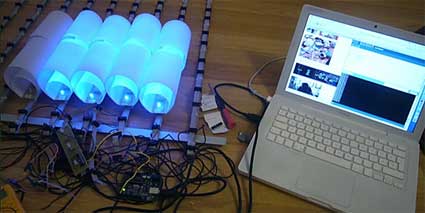
Arbour Light would be supported by a website, which would allow users to upload and use an ambient database made of the videos of Arbour Light owners and “phenomena-collectors”.
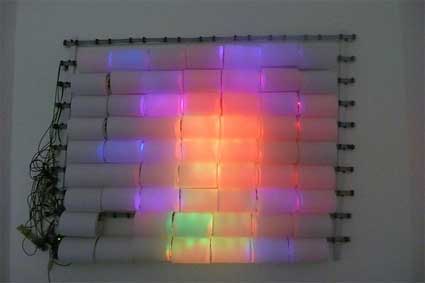
Animata is a real-time animation software for live performance. To create and move virtual characters, you load an image and attach a skeleton to it. By placing them in different depths of field, they get a 3D effect.
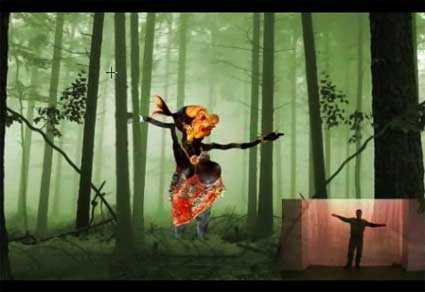
Screenshot from a video showing Reverse Shadow Theatre using Animata
The designers demo’ed the latest version of the project where characters’ movements of a shadow character animation were controlled by the movements of live actors. Furthermore, Animata allows a multi-user collaboration via the internet, thus providing an opportunity for the collective editing and creating of the performance.
Further development include:
– the animation of the characters, camera movement, and other special visual effects will be controllable by cell phones, or through multi-touch-screens or sensors.
– connecting Animata with widespread programming environments (Max/MSP, Pure Data, EyesWeb) to make use of the possibilities of these applications in the fields of image editing, sound analysis, or motion capture.
All the projects.
Image on the homepage by Kitchen Budapest.
